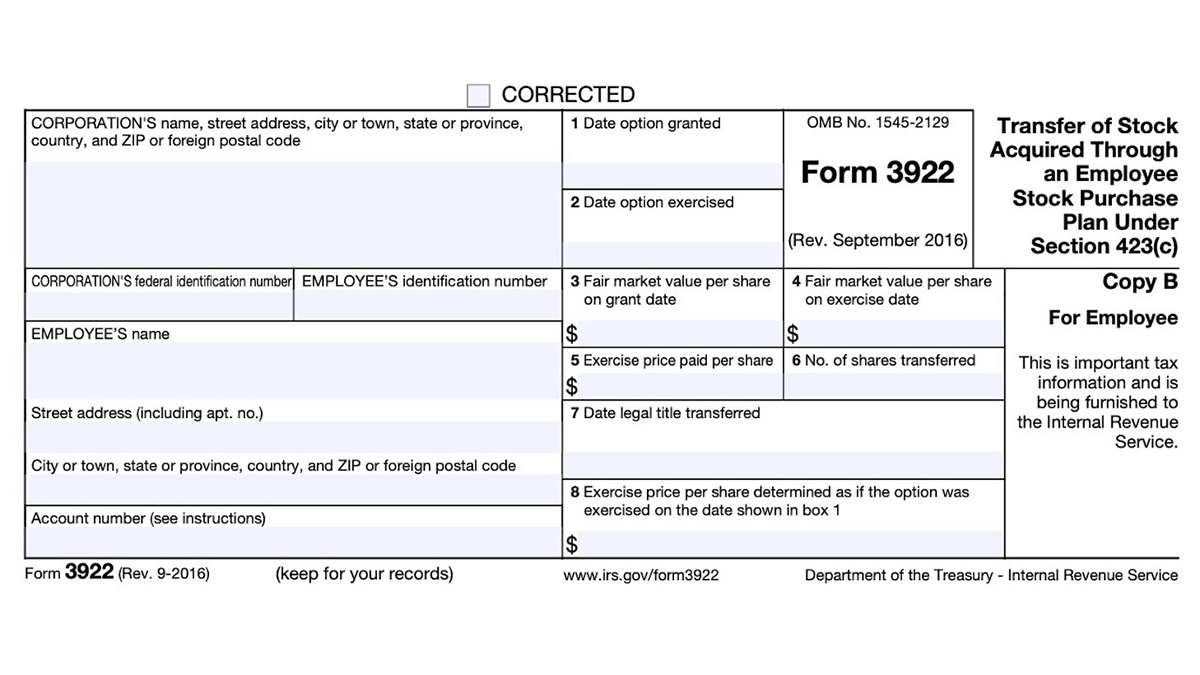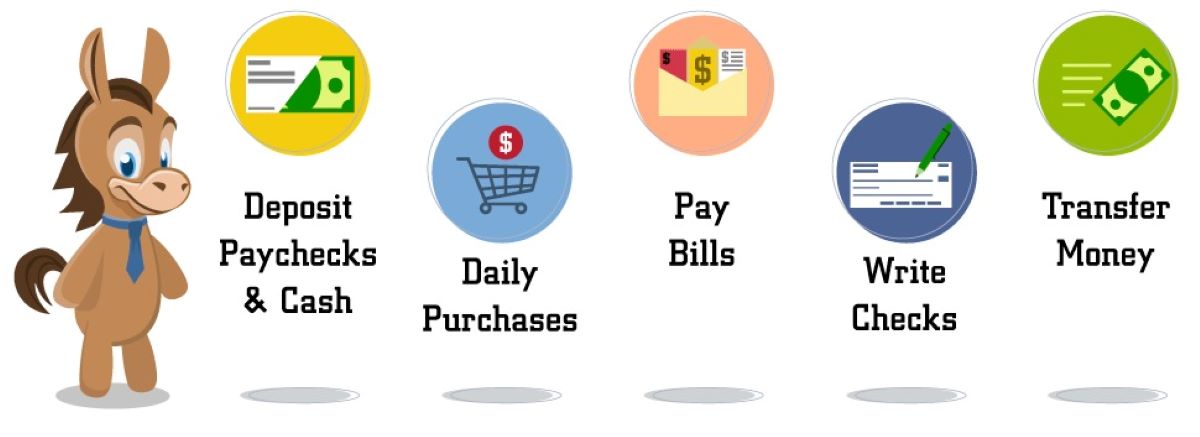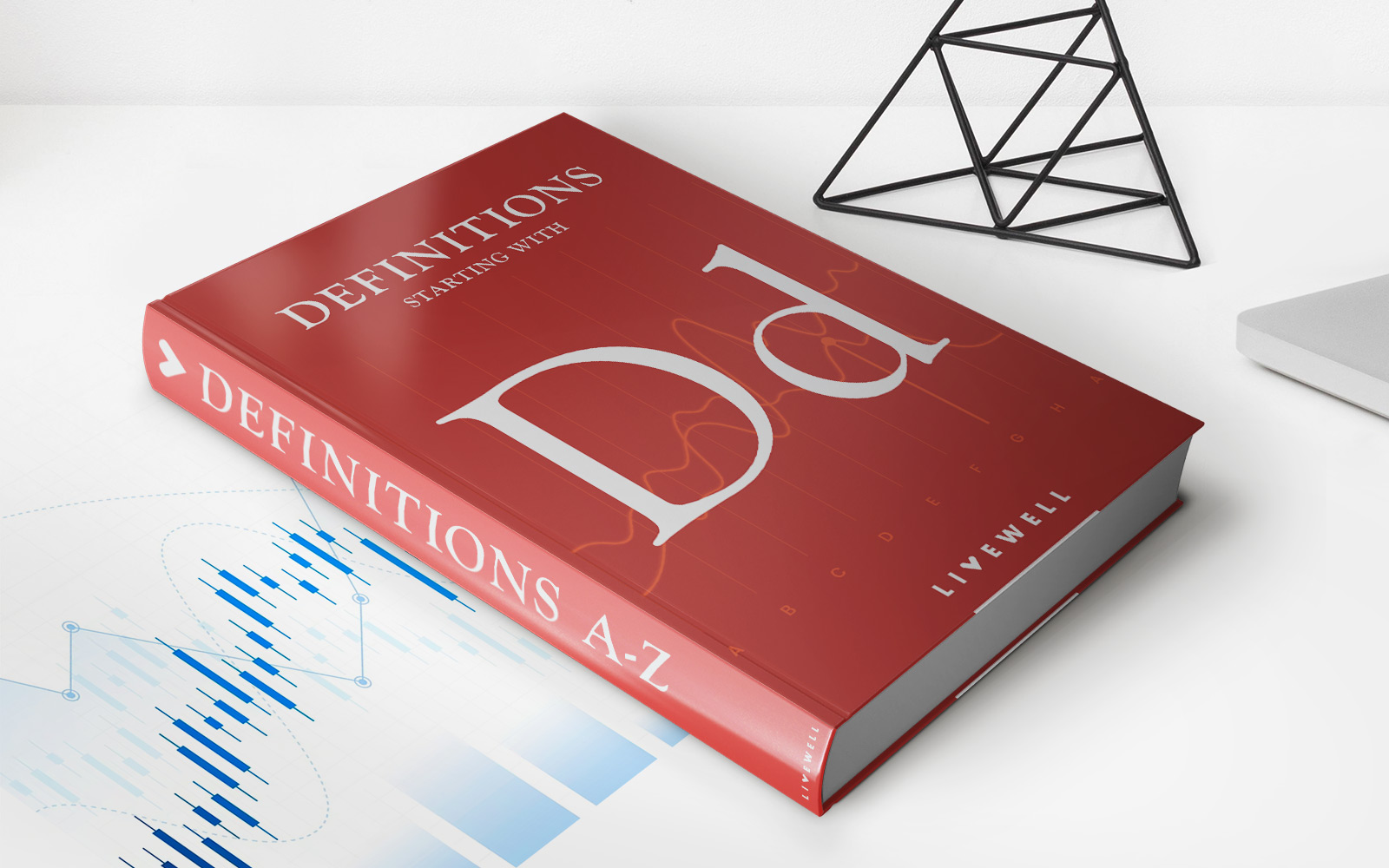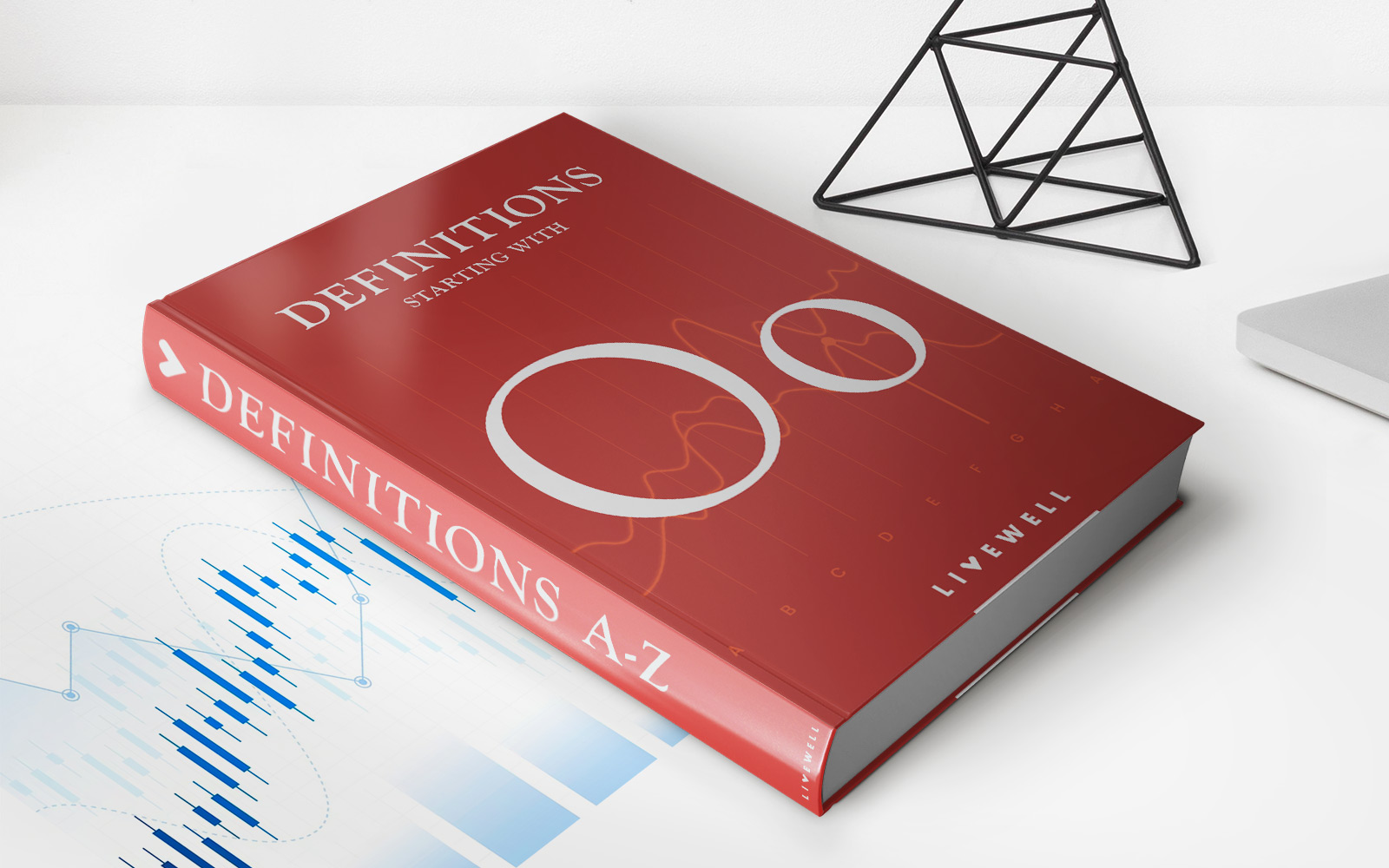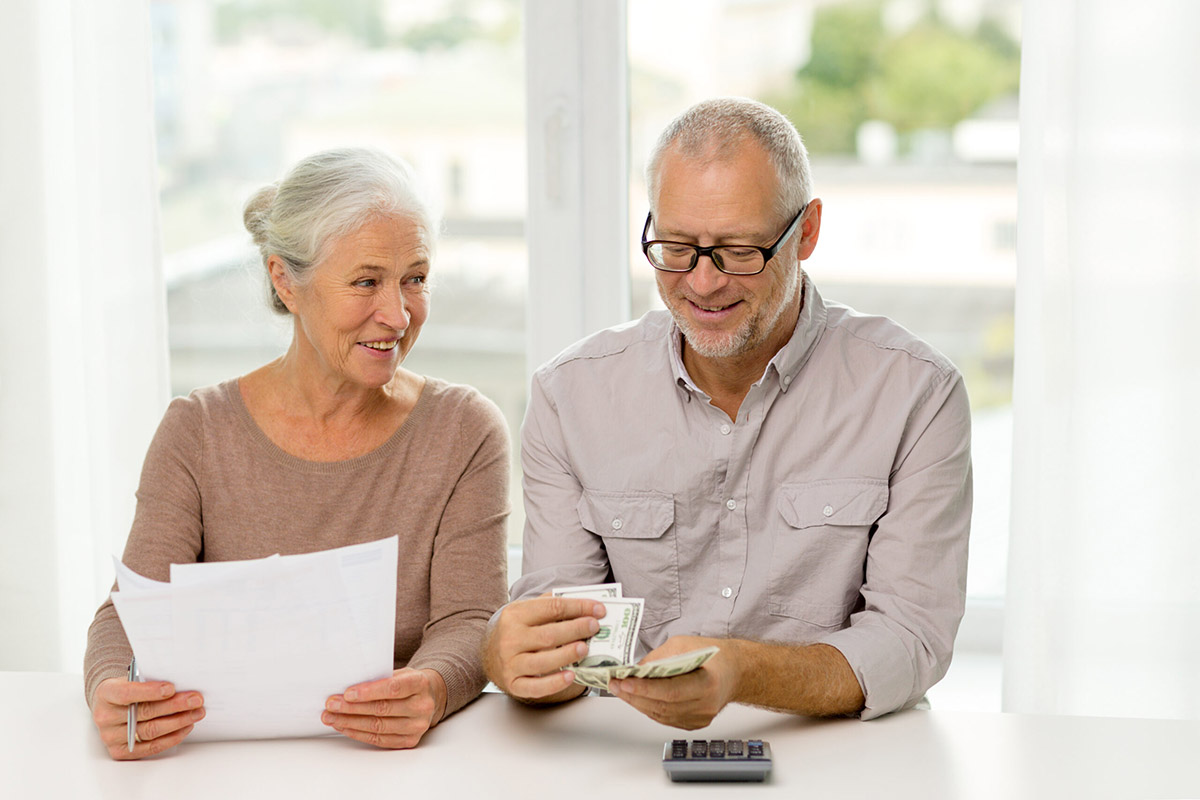

Finance
How To Report RMD On A Tax Return
Published: October 29, 2023
Learn how to properly report your Required Minimum Distributions (RMD) on your tax return. Get expert advice and tips on managing your finances.
(Many of the links in this article redirect to a specific reviewed product. Your purchase of these products through affiliate links helps to generate commission for LiveWell, at no extra cost. Learn more)
Table of Contents
- Introduction
- Understanding Required Minimum Distributions (RMDs)
- Determining Your RMD Amount
- Reporting RMDs on Form 1099-R
- Including RMDs on Your Tax Return
- Using Form 1040
- Using Form 1040A
- Using Form 1040EZ
- Additional Considerations for Reporting RMDs
- Avoiding Penalties for Failing to Report RMDs
- Where to Get Help or More Information
- Conclusion
Introduction
Welcome to our comprehensive guide on how to report Required Minimum Distributions (RMDs) on your tax return. If you’re reaching a certain age or have inherited an IRA or retirement plan, you may be required to take withdrawals from these accounts each year. These mandatory withdrawals are known as RMDs, and they come with certain reporting obligations.
Understanding how to report RMDs correctly is important to ensure that you comply with the Internal Revenue Service (IRS) regulations and avoid any potential penalties. In this guide, we’ll walk you through the process step-by-step, so you can confidently report your RMDs on your tax return.
We’ll cover the basics of RMDs, including how to determine your RMD amount and the importance of reporting these distributions accurately. We’ll also discuss the different IRS forms you can use to report RMDs, depending on your specific circumstances.
In addition to the reporting requirements, we’ll also provide you with some useful tips and considerations to help you avoid any potential penalties related to RMDs. Finally, we’ll point you in the right direction for finding additional help or information should you need it.
So, whether you’re new to RMDs or simply need a refresher on how to report them, let’s dive in and ensure that you’re equipped with the knowledge to handle your RMD reporting obligations confidently.
Understanding Required Minimum Distributions (RMDs)
Required Minimum Distributions (RMDs) are withdrawals that individuals must take from certain retirement accounts once they reach a certain age. The purpose of RMDs is to ensure that individuals do not indefinitely defer paying taxes on their retirement savings.
The age at which individuals must start taking RMDs depends on the type of retirement account they have. For most retirement accounts, including Traditional IRAs, SEP IRAs, and SIMPLE IRAs, the RMD requirement begins at age 72. However, if you turned 70½ before January 1, 2020, you are subject to the previous rule, which required RMDs to begin at that age.
It’s important to note that for Roth IRAs, RMDs are not required during the owner’s lifetime. This is one of the advantages of a Roth IRA, as it allows for tax-free growth and potential tax-free withdrawals.
The amount of your RMD is calculated based on various factors, including your age, the balance of your retirement account, and your life expectancy. The IRS provides specific tables and formulas to determine the exact RMD amount.
If you have multiple retirement accounts, you can generally calculate the total RMD amount by aggregating the balances of all your qualifying accounts as of the end of the previous year. However, you have the option to take the RMD from each account separately or from one account that holds the combined total amount.
Keep in mind that if you fail to take the required minimum distribution or withdraw less than the required amount, you may be subject to a significant penalty. The penalty is generally 50% of the amount you failed to withdraw on time.
Now that we have a basic understanding of RMDs, let’s move on to the next section, which will cover how to determine your specific RMD amount.
Determining Your RMD Amount
Calculating your Required Minimum Distribution (RMD) amount is a crucial step in the process of reporting RMDs on your tax return. The IRS provides specific tables and formulas to help you determine the exact amount you need to withdraw each year.
One commonly used table is the Uniform Lifetime Table, which determines the life expectancy factor based on your age. Another table is the Joint and Last Survivor Table, used when the account owner’s spouse is the sole beneficiary and is more than ten years younger. These tables help determine the distribution period for the RMD calculation.
To calculate your RMD amount, follow these steps:
- Determine the balance of your retirement account(s) as of December 31st of the previous year.
- Identify your age as of the end of the current year.
- Find the distribution factor for your age in the appropriate IRS table.
- Divide your retirement account balance by the distribution factor to calculate your RMD amount.
It’s important to note that if you have multiple retirement accounts, you can aggregate the balances and take the RMD from any of the accounts or from a combination of accounts. However, if you have separate retirement accounts with different tax implications, such as a Traditional IRA and a Roth IRA, you must calculate and withdraw the RMD amount separately for each account.
For inherited retirement accounts, the calculation of RMDs differs slightly. Non-spousal beneficiaries must use the Single Life Expectancy Table provided by the IRS to determine their required distributions. The calculation takes into account the age of the beneficiary and, in subsequent years, reduces the life expectancy by one for each year elapsed.
It’s crucial to stay updated with the IRS rules and tables for RMD calculations, as they are subject to change. Additionally, consulting a financial advisor or tax professional who specializes in retirement planning can help ensure accurate RMD calculations and compliance with the IRS guidelines.
Now that you understand how to determine your RMD amount, let’s move on to the next section, where we’ll cover how to report RMDs on Form 1099-R.
Reporting RMDs on Form 1099-R
When it comes to reporting Required Minimum Distributions (RMDs) on your tax return, Form 1099-R plays a crucial role. Form 1099-R is used to report distributions from pensions, annuities, retirement or profit-sharing plans, IRAs, and other similar accounts.
When you receive an RMD from your retirement account, the account custodian or administrator is required to provide you with a Form 1099-R. This form contains important information that you’ll need to report on your tax return.
On Form 1099-R, you will find the following information related to your RMD:
- Box 1: Total distribution – This includes the gross amount of your RMD.
- Box 2a: Taxable amount – This indicates the portion of your RMD that is subject to income tax.
- Box 7: Distribution code – This code identifies the specific type of distribution, such as an RMD.
When filling out your tax return, you will need to transfer the information from your Form 1099-R onto your Form 1040, 1040A, or 1040EZ, depending on your specific circumstances.
If you receive multiple 1099-R forms from different retirement accounts, you will need to report the information from each document separately. Be sure to check the boxes on your tax return indicating that you have multiple 1099-Rs.
It is important to accurately report the information from your Form 1099-R on your tax return to avoid any discrepancies or potential audit triggers. Double-check all the information on the form, ensuring that it aligns with your records and the distributions you actually received.
If you have any questions or concerns about the information on your Form 1099-R, reach out to the account custodian or administrator responsible for issuing the form. They should be able to provide clarification or assistance in resolving any discrepancies.
Now that you understand how to report RMDs on Form 1099-R, let’s move on to the next section, where we will discuss how to include RMDs on your tax return using different IRS forms.
Including RMDs on Your Tax Return
Once you have determined and received your Required Minimum Distribution (RMD) and obtained your Form 1099-R, the next step is to include your RMDs on your tax return. The specific form you use to report your RMDs will depend on your individual tax situation and the complexity of your return.
Here are the three primary IRS forms you can use to report your RMDs:
- Form 1040: This is the standard individual income tax return form that most taxpayers use. If you are required to file Form 1040, you will report your RMDs on this form.
- Form 1040A: This form is a simplified version of Form 1040 and can be used by taxpayers with less complex tax situations. If you are eligible to file Form 1040A, you can report your RMDs on this form.
- Form 1040EZ: The simplest tax return form available, Form 1040EZ is limited to individuals with very basic tax situations. If you meet the requirements to use Form 1040EZ, you can report your RMDs on this form.
Regardless of the form you use, you will need to locate the appropriate section to report your RMD information. Typically, this will be the section related to pensions, annuities, or distributions. Consult the instructions for the specific form you are using to ensure you are reporting your RMDs correctly.
When reporting your RMDs on your tax return, you will typically enter the total distribution amount from your Form 1099-R on the designated line. Additionally, if any portion of your RMD is taxable, you will enter the taxable amount on the corresponding line.
It is important to double-check all the information you enter on your tax return. Ensure that the numbers align with the amounts reported on your Form 1099-R. Accuracy is crucial to avoid any discrepancies or potential issues with the IRS.
If you are uncertain about how to report your RMDs on your tax return or have questions regarding your specific situation, consider seeking the assistance of a tax professional or utilizing tax software. These resources can provide guidance and help ensure that your RMDs are reported accurately.
Now that you understand how to include your RMDs on your tax return using the appropriate IRS forms, let’s move on to the next section, which covers additional considerations for reporting RMDs.
Using Form 1040
Form 1040, also known as the U.S. Individual Income Tax Return, is the standard form used by most taxpayers to report their income, deductions, and credits to the Internal Revenue Service (IRS). If you are required to file Form 1040, here’s how you can report your Required Minimum Distributions (RMDs):
- Calculate your total RMD amount based on the instructions provided in the previous section.
- Locate the “Pensions and Annuities” section on Form 1040. This is usually found on line 4a under “Income.” Enter the total distribution amount from your Form 1099-R on line 4a.
- If any portion of your RMD is taxable, enter the taxable amount on line 4b under “Taxable amount.”
- Continue filling out the rest of Form 1040, including any other sources of income, deductions, and credits as required.
- Review your completed form to ensure accuracy and double-check that all RMD information aligns with your Form 1099-R.
Once you have completed Form 1040, sign and date it before sending it to the IRS. Remember to keep a copy for your records.
It’s essential to carefully review the instructions and guidelines provided with Form 1040 to ensure you are reporting your RMDs correctly. If you are uncertain about any aspect of your tax return or need additional assistance, consult a tax professional or use tax software to help guide you through the process.
Now that you know how to report your RMDs using Form 1040, let’s move on to the next section, which discusses how to report RMDs using Form 1040A.
Using Form 1040A
Form 1040A is a simplified version of the U.S. Individual Income Tax Return, designed for taxpayers with less complex tax situations. If you are eligible to file Form 1040A and need to report your Required Minimum Distributions (RMDs), here’s how you can do it:
- Calculate your total RMD amount based on the instructions provided in the previous section.
- Locate line 14a, titled “Pensions and Annuities,” on Form 1040A. Enter the total distribution amount from your Form 1099-R on this line.
- If any portion of your RMD is taxable, enter the taxable amount on line 14b under “Taxable amount.”
- Proceed to complete the rest of Form 1040A, including any other income, deductions, and credits as required.
- Review your completed form to ensure accuracy and verify that all RMD information matches your Form 1099-R.
Once you have finished filling out the form, sign and date it before sending it to the IRS. Keep a copy for your records.
It’s important to carefully read the instructions provided with Form 1040A to ensure that you are correctly reporting your RMDs. If you have any uncertainty or need further assistance, consider consulting a tax professional or utilizing tax software to guide you through the process.
Now that you understand how to report your RMDs using Form 1040A, let’s move on to the next section, which covers how to report RMDs using Form 1040EZ.
Using Form 1040EZ
Form 1040EZ is the simplest tax return form available, used by taxpayers with very basic tax situations. If you meet the eligibility requirements to file Form 1040EZ and need to report your Required Minimum Distributions (RMDs), here’s how you can do it:
- Calculate your total RMD amount based on the instructions provided in the previous section.
- Locate line 7, titled “Pensions and Annuities,” on Form 1040EZ. Enter the total distribution amount from your Form 1099-R on this line.
- If any portion of your RMD is taxable, enter the taxable amount on line 8 under “Taxable amount.”
- Complete the rest of Form 1040EZ, including any other income, deductions, and credits as required.
- Review your completed form to ensure accuracy and verify that all RMD information matches your Form 1099-R.
Once you have finished filling out the form, sign and date it before sending it to the IRS. Keep a copy for your records.
It’s important to carefully read and follow the instructions provided with Form 1040EZ to ensure that you are reporting your RMDs correctly. If you have any doubts or need further assistance, consider consulting a tax professional or utilizing tax software to guide you through the process.
Now that you understand how to report your RMDs using Form 1040EZ, let’s move on to the next section, which covers additional considerations for reporting RMDs.
Additional Considerations for Reporting RMDs
When reporting your Required Minimum Distributions (RMDs) on your tax return, there are a few additional considerations to keep in mind to ensure accuracy and compliance with IRS regulations. Here are some important points to consider:
Multiple Retirement Accounts: If you have multiple retirement accounts that are subject to RMDs, make sure to calculate and report the RMDs for each account separately. While you may have the flexibility to withdraw the RMD from any of your accounts, it is crucial to accurately report the distributions from each individual account. This ensures that you meet the requirements for each account and avoid penalties.
Rollovers and Conversions: If you rolled over or converted a retirement account in the tax year, be aware that RMDs are still required for the year in which the conversion or rollover occurs, excluding Roth IRAs. Report any RMDs associated with these accounts on your tax return, even if you no longer hold the original account.
Inherited Retirement Accounts: If you inherited a retirement account, the RMD rules may differ. Non-spousal beneficiaries are generally required to take RMDs based on their own life expectancy using the Single Life Expectancy Table provided by the IRS. Pay close attention to the specific requirements for inherited accounts and consult the IRS guidelines or a tax professional for accurate reporting.
Direct Distribution to Charity: If you are 70½ or older, you have the option to make a qualified charitable distribution (QCD) from your IRA directly to a qualified charity. The amount of the QCD can be used to satisfy your RMD for the year, up to certain limits. When reporting your RMD and QCD, follow the specific instructions provided by the IRS to ensure accurate reporting and potential tax benefits.
Keep Documentation: It is crucial to keep adequate documentation to support your RMD calculations and reporting. Retain copies of your Form 1099-R, as well as any other relevant statements or records related to your retirement accounts and RMD calculations. This documentation serves as important evidence in the event of an audit or if any questions arise regarding your RMD reporting.
Remember, accuracy and compliance with IRS guidelines are essential when reporting RMDs on your tax return. If you have any doubts, consult a tax professional or utilize tax software to ensure that your RMDs are reported correctly and in line with the IRS regulations.
Now that you are aware of the additional considerations for reporting RMDs, let’s move on to the next section, which covers the penalties for failing to report RMDs.
Avoiding Penalties for Failing to Report RMDs
Reporting your Required Minimum Distributions (RMDs) accurately and on time is crucial to avoid potential penalties imposed by the Internal Revenue Service (IRS). Failure to report or withdraw the required amount can result in significant penalties. Here are some important steps to take to avoid penalties for failing to report RMDs:
Stay Informed: Be aware of the RMD rules and requirements for your specific retirement accounts. Stay updated on any changes or updates from the IRS regarding RMD calculations, age requirements, and reporting obligations. The IRS provides resources, including publications and online materials, to help you understand and comply with the RMD rules.
Calculate RMDs Accurately: Take the time to calculate your RMDs correctly, using the appropriate IRS tables and formulas. Consider seeking advice from a financial advisor or tax professional who specializes in retirement accounts if you have complex circumstances or uncertainties regarding your RMD calculations. Precise calculations help ensure that you withdraw and report the correct amount.
Report RMDs on Time: Report and withdraw your RMDs by the deadline. The deadline for taking RMDs is generally December 31st of each year. Failing to withdraw the required amount on time can result in a penalty of 50% of the RMD amount that was not withdrawn.
Report Accurate Numbers: Take care to accurately report your RMDs on your tax return. Ensure that the information from your Form 1099-R is correctly entered. Double-check all the figures before submitting your tax return to avoid any discrepancies that could trigger an audit or penalty.
Correct Mistakes Promptly: If you realize that you made an error or failed to report your RMDs properly, take prompt action to correct it. File an amended tax return using Form 1040X to report the accurate RMD information. Keep in mind that penalties may still apply, even if you rectify the error later, so it’s best to report RMDs correctly from the start.
Seek Professional Advice: If you are unsure about any aspect of reporting your RMDs or need further guidance, consult a tax professional or financial advisor who specializes in retirement accounts. They can provide personalized advice and help ensure compliance with the IRS rules, saving you from potential penalties and troubles.
By staying informed, accurately calculating and reporting your RMDs, and seeking professional advice when needed, you can avoid penalties for failing to report your RMDs accurately. Compliance with the IRS regulations is crucial to maintain the integrity of your retirement savings and ensure a smooth tax filing process.
Now that you know how to avoid penalties for failing to report RMDs, let’s move on to the next section, where we’ll discuss resources to seek help or find more information.
Where to Get Help or More Information
If you need assistance or more information regarding Required Minimum Distributions (RMDs) and reporting them on your tax return, several resources are available to help you navigate the process. Here are a few options to consider:
IRS Website: The official website of the Internal Revenue Service (IRS) offers a wealth of information on RMDs, including publications, forms, instructions, and FAQs. Visit www.irs.gov and search for “RMDs” to access the latest resources and guidelines directly from the IRS.
Tax Professionals: Consider consulting a tax professional who specializes in retirement accounts and tax planning. These professionals can provide personalized advice tailored to your specific circumstances, ensuring accurate reporting of your RMDs and compliance with IRS regulations. They can also help you optimize your overall tax strategy and potentially identify any additional tax-saving opportunities.
Financial Advisors: If you have questions about RMDs and their impact on your retirement planning, consulting a financial advisor is advisable. Financial advisors can help you understand the long-term implications of RMDs on your retirement funds and offer guidance on managing your distributions to meet both your tax obligations and financial goals.
Retirement Account Custodians/Administrators: Reach out to the custodian or administrator of your retirement account(s) for assistance with RMD-related questions. They can provide information on your specific accounts, help calculate your RMDs, and guide you through the necessary steps for reporting them correctly.
Online Tax Software: Utilize online tax software, such as TurboTax or H&R Block, to guide you through the process of reporting RMDs on your tax return. These platforms provide step-by-step instructions and automate calculations, ensuring accuracy and simplifying the reporting process.
Support Groups and Forums: Engaging with online support groups, forums, or communities focused on retirement planning, tax preparation, or personal finance can provide valuable insights and experiences from individuals who have dealt with RMDs. These communities often offer a platform for asking questions, discussing concerns, and sharing advice.
Remember, each individual’s tax situation and retirement plan may vary, so it’s important to seek guidance and resources specific to your needs. Whether it’s researching on the IRS website, consulting professionals, or leveraging technology, taking the time to educate yourself and seek assistance can greatly contribute to accurate and stress-free reporting of RMDs.
Now that you know where to get help or find more information, let’s conclude this comprehensive guide on reporting RMDs on your tax return.
Conclusion
Reporting Required Minimum Distributions (RMDs) on your tax return is an important step to ensure compliance with IRS regulations and avoid potential penalties. Throughout this comprehensive guide, we have covered the key aspects of reporting RMDs, including understanding RMDs, calculating your RMD amount, and reporting RMDs on different IRS forms.
We discussed the importance of accurately determining your RMDs based on your retirement account balances, age, and life expectancy. Additionally, we explained how to report your RMDs on Form 1099-R, as well as on Forms 1040, 1040A, and 1040EZ, depending on your specific tax situation.
We emphasized the significance of staying informed about RMD rules and any updates from the IRS. It is essential to accurately calculate and report your RMDs, keeping track of documentation and seeking professional assistance when needed.
Ultimately, by following the guidelines outlined in this guide and staying proactive in your tax planning, you can fulfill your reporting obligations and avoid penalties for failing to report RMDs accurately. Remember, when in doubt, seek the help of tax professionals, financial advisors, or trusted online resources such as the IRS website.
As you navigate the landscape of RMD reporting, keep in mind that everyone’s tax situation is unique. It’s important to understand the specific requirements that apply to your retirement accounts and consult professionals for guidance tailored to your needs.
We hope this guide has provided you with valuable insights and information to confidently report your RMDs on your tax return. By fulfilling your reporting obligations, you can maintain compliance with IRS rules and enjoy the benefits of your hard-earned retirement savings.
Remember, tax laws and regulations can change over time, so it’s always a good idea to stay updated and seek professional advice when necessary. Best of luck with your RMD reporting and your overall tax preparation journey!







